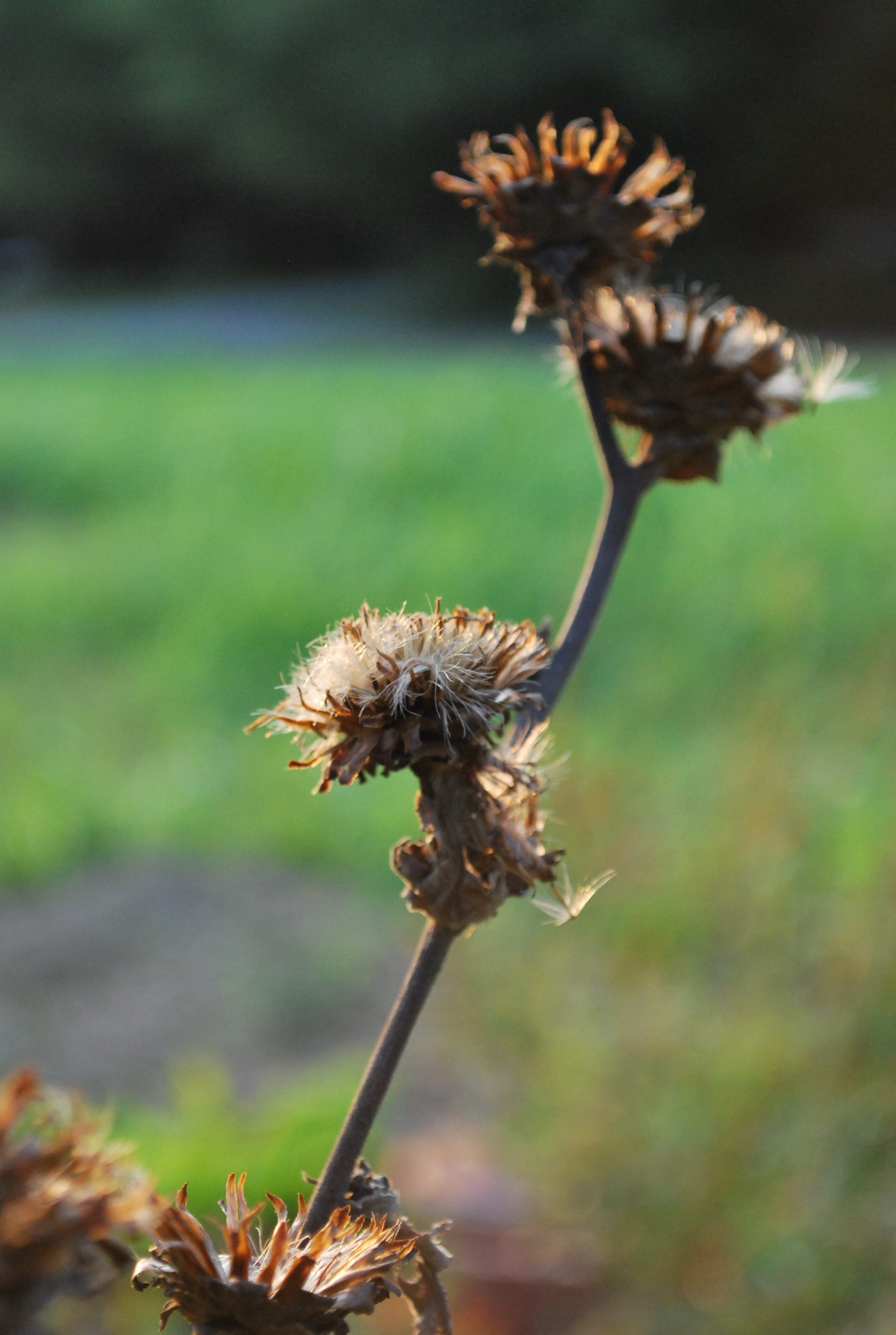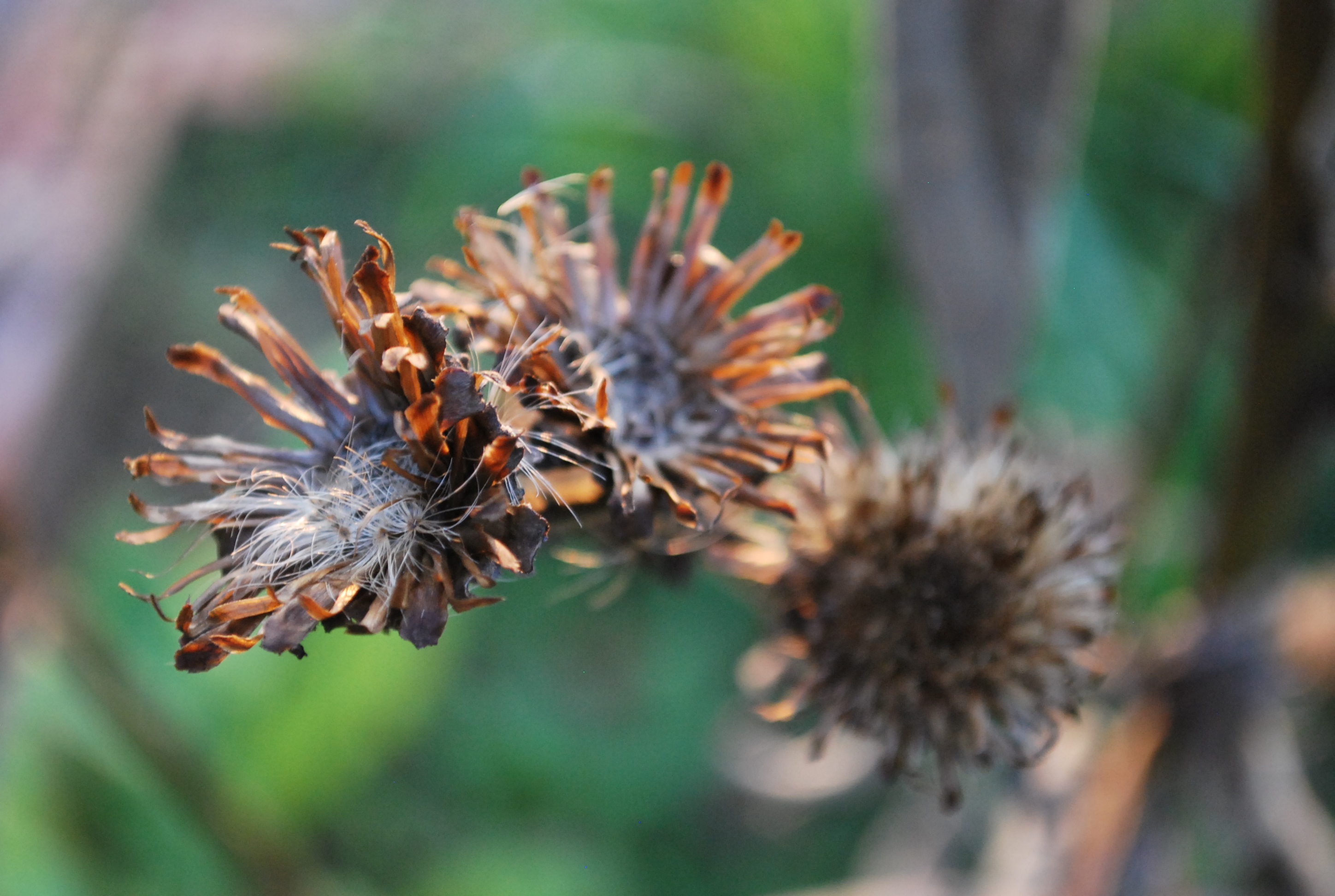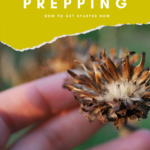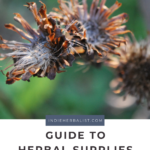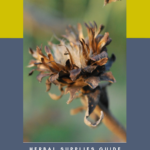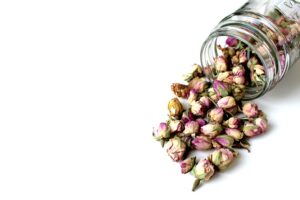Links contained in this post and elsewhere on my website may include affiliate links. When you make a purchase through these links, I earn a commission at no additional cost to you. I only link to products and services that I love - and that I think you will love, too!
Herbalism is a great subject to study for emergency prepping. Knowing herbalism gives you access to a renewable source for supporting your health. Besides, being your own herbalist is handy in both good times and bad!
There are a number of different skills you need to learn to be confident and competent as your own herbalist. For now, let’s discuss one of the most common questions new herbal preppers have: how the heck am I supposed to stock my home apothecary?
Short term emergency prepping with herbs
First off, let’s remember that emergencies usually fall into one of two categories: short-term or long-term. Short-term is the easiest to prepare for. You might include your basic first aid supplies, a few key herbal formulas, and any herbs you use on a daily basis- in whatever forms you prefer- and call it good. My herbal comfort kit is a perfect example of short-term herbal emergency prepping. It’s ideal for a GOOD bag or shelter-in-place kit.
In a short-term scenario, you can keep smaller quantities on hand because they are easily replenished from your suppliers of choice. There’s not really any danger of shortages (other than seasonal, which does sometimes happen with bulk herb suppliers).
Long term emergency prepping with herbs
However, if you begin to think in terms of long-term emergency scenarios, then other considerations for the home apothecary come to mind. Potential long-term scenarious include:
- extended power failure or lack of access to the power grid
- supply chain interruptions and widespread shortages
- lengthy times of civil unrest
- pandemics that limit availability of medical care and require lengthy lockdowns or quarantines
- environmental or man-made disasters that cause seasonal irregularities (like a volcanic erruption causing low light and colder than usual temps in summer)
Every herbal prepper will approach stocking a home apothecary somewhat differently. I hope you will find some useful tips and suggestions from my own preps as you work on stocking your herbal supplies for emergency preparedness.
How to store your supplies
First off, let’s discuss storage. Dried herbs can be an investment of time (if you grow your own) and money (if you purchase from bulk herb suppliers), so protecting that investment is important. Dried herbs are extremely sensitive to moisture, light, and heat.
Airtight containers, either opaque or kept in a dark cabinet or box are a good idea. As you begin working with herbs, you will quickly learn to tell if dried herbs are potent or not. Potency is reflected in color – it will become easy to spot light-bleached or old, stale herbs on sight after you’ve seen them a few times. Potency is also reflected by scent. Not all herbs have a strong smell, but they will all have a distinctive aroma. Old, stale herbs all smell very much alike. That absence of aroma often signals the degradation of the chemicals from which herbs derive their beneficial actions – no scent, no good!
I have a main apothecary cabinet where I keep most of my supplies, but it’s not a portable solution. For that, I have two up-cycled train cases for herbal first aid supplies. I am also in the process of stocking a five-gallon bucket with dried herbs so that I have a grab-and-go apothecary. After the wildfires here two years ago, it made me realize that this is a good idea if we need to evacuate for any reason. You may find that you are content with a few well-stocked first aid kits in the event of an evacuation. However, using a five-gallon bucket with gamma lid allows you to keep herbs for long-term storage and repackage them with oxygen-absorbing packets.
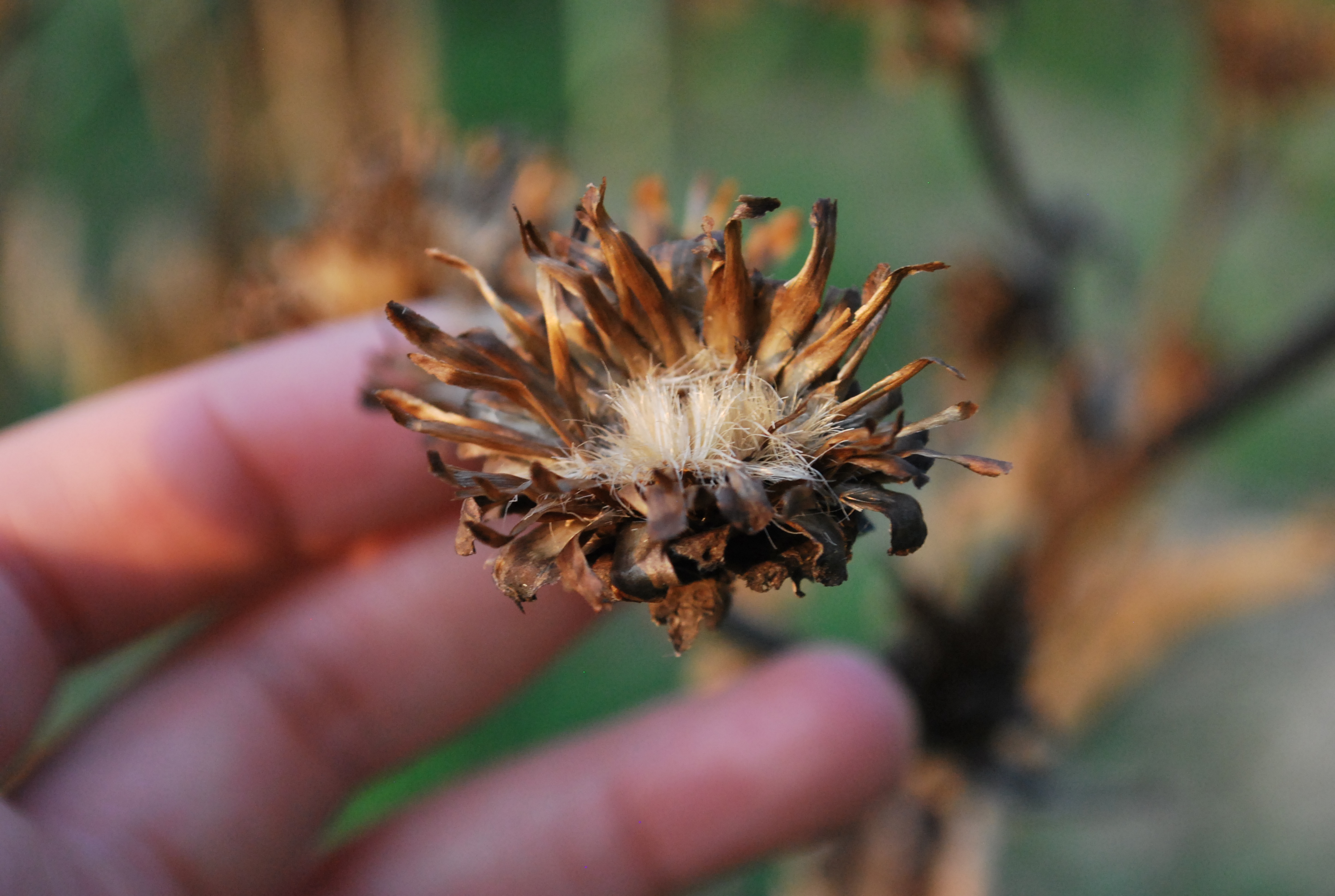
What herbs are ideal for emergency prepping?
It would be nice if there was a checklist for herbal first aid that will work for everyone, but that’s not really how herbalism works. It’s more important to match herbs to the person and not try to approach herbs the way you might use over-the-counter medications.
Instead, it’s important to think in terms of herbal categories and your own specific needs. A selection of single herb extracts (simples) is important, but you should also consider making some versatile formulas ahead of time. Good books for learning to make herbal formulas are Herbal Medicines from the Heart of the Earth, by Sharol Tilgner (Western perspective) and Healing with the Herbs of Life (Traditional Chinese Medicine perspective).
Herbal extracts will typically have a better shelf life than dried herbs. You can also make potent extracts at home for a fraction of the cost of buying them. The most important categories to consider for herbal emergency preparedness are:
Immune System Support
This includes herbs that support immunity in a variety of situations and can be a complex category. Some herbs are excellent at bolstering the aspects of the immune system that are active against viruses, while others are more appropriate for general immune defenses. In addition, consider herbs like lymphatics and alteratives that have a broader action on immunity and wellness. Diaphoretics are an important class of herbs for fever care that may also support a healthy immune response.
Nervous System Support
Categories of herbs that fall under this category include nervines, which support healthy nervous system function. Nervines can be further broken down into groups that support emotional wellbeing, clarity of thought, or support a healthy pain response. This is something of a complex category as well, because nervines that support a healthy pain response may be strengthened by herbs in other categories, such as antispasmodic herbs and herbs that support emotional wellbeing.
Respiratory Support
Our ability to breathe is fundamental to life, so considering herbs to support the lungs and upper respiratory tract is very important. There are also quite a few illnesses and contagious diseases that affect the lungs, so this category goes hand-in-hand with immune system support. In this category, it’s important to consider drying as well as moistening herbs, and antispasmodic herbs with an affinity for the respiratory tract are also useful.
Digestive and Urinary Tracts
Natural disasters can contaminate water, which can lead to digestive upset. Diarrhea isn’t fun in daily life, but it’s much worse during an emergency. Herbal astringents and digestive- support herbs can make life much more comfortable in these settings. Stress, unhygienic conditions, and potentially cutting back on your water rations make urinary tract infections more likely – especially if you are already prone to them. Herbs with an affinity for the urinary tract, as well as herbal demulcents and diuretics are an important category for your first aid kit.
Herbal Trauma Care
Emergencies and natural disasters can get ugly. That’s why herbs for trauma care are important to include in your herbal emergency preparedness plans. Consider herbs that are useful for bruising, lacerations, and broken bones. This can include categories like antispasmodics, “blood moving” herbs (emmenagogues), herbs with antiseptic properties, and herbs that are traditionally used in Chinese martial arts (“hit medicine” herbs).
Special Populations
If you will be providing first aid for your immediate family and friends, consider special needs within your group. It’s wise to include herbs that are safe for children and the elderly in your herbal supplies. Also plan for any dogs or cats you will be caring for in the event of a long term emergency. Do any of your family members have special medical needs? Be sure to talk with your doctor as you create an emergency preparedness plan for them. Do your research about how herbs may interact with life-saving medications they need, or how you can potentially provide care for them if access to medical care is interrupted during an emergency.
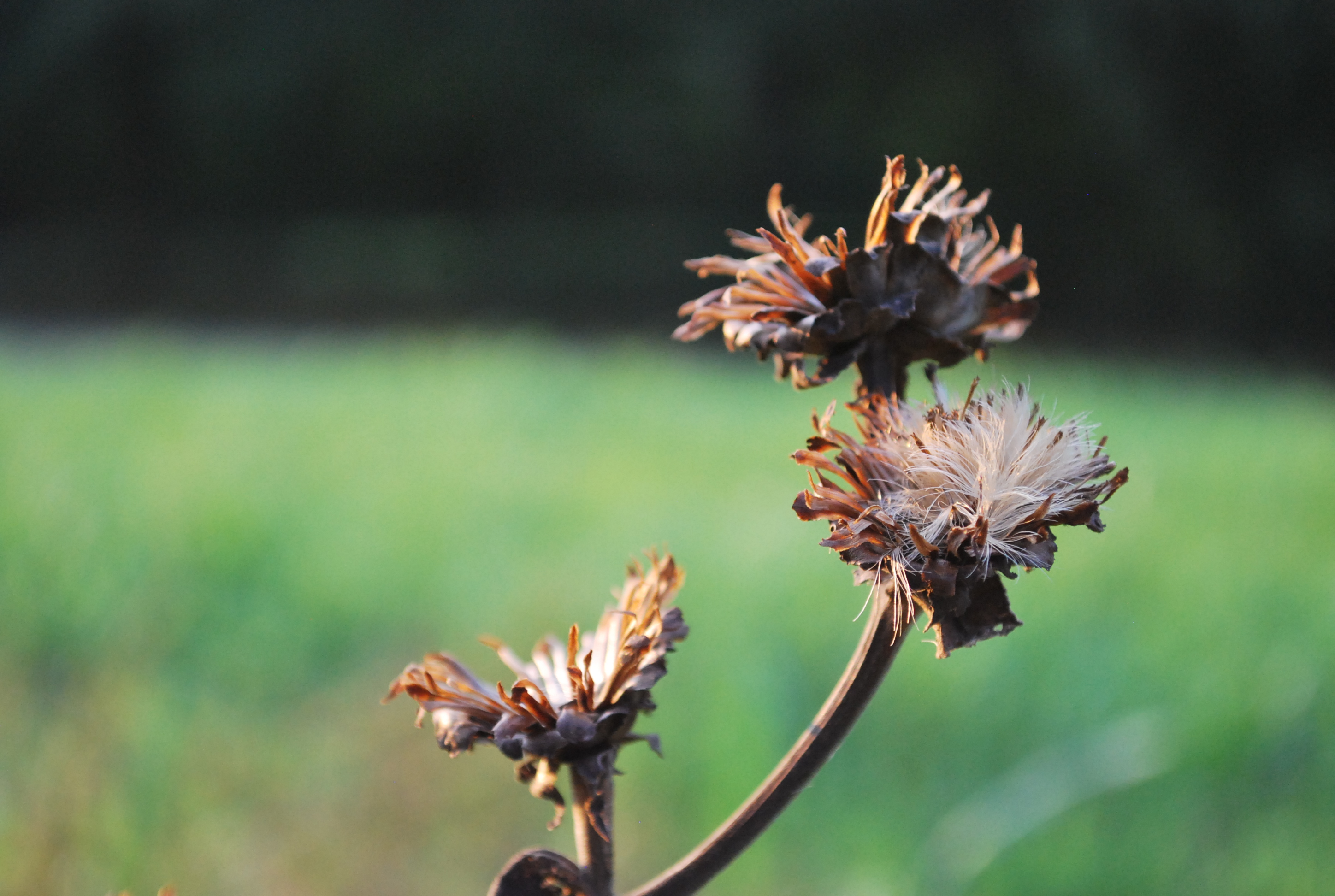
What forms are best for storage?
For each of the herbs on my personal list I keep “everyday” stock that’s part of my day-to-day uses, and “reserve” stock, which is for long-term preparedness. I make sure to re-order or resupply that reserve stock as the “everyday” stock begins to get low. Use a first-in, first-out rotation system to make sure your herbs stay potent.
When storing dried herbs, stay away from powders. Powdered herbs lose potency quickly. Instead, store cut and sifted leaves, roots, barks, and berries. In my experience, herbal flowers like elderflower and calendula have the shortest shelf-life.
Extracts (tinctures) have a longer shelf life than dried herbs, so storing extracts makes sense. However, vinegar or glycerin-based extracts don’t store as well as ethanol (alcohol) extracts. They work well as part of your everyday home apothecary, but keep vinegar and glycerin extracts out of your long-term herbal preps.
How much to store?
I chose 4oz as the default size for my emergency preparedness stocks because 1 oz of herbal extract will typically last for a full month at a standard serving of 15 drops, three times a day. These herbs are being kept on hand for acute rather than chronic needs, so they shouldn’t be needed for more than a few days at a stretch. Thus, even 2oz is a fairly good supply for one person.
If you are making your own extracts at home, however, it’s just as easy to make 4oz as 1oz, and actually cheaper than buying a single 1 oz bottle at the store. So, why not?
If you rely on any herbs on a daily basis, you should consider storing a larger quantity. For instance, I prefer to keep 8-16oz of my favorite adaptogens and nervines on hand.
The smallest bag of dried bulk herbs usually is a 4oz size. One oz of dried herb will usually make 5 oz or so of extract. As long as you also have plenty of vodka or other menstruums on hand, you are all set to make more extract as needed, and can also make teas, oils, or salves as required. Just remember that alcohol is flammable, so store your extracting mediums responsibly.
Growing your own herbs
Gardening should be on the top of your skills list if you are interested in emergency preparedness with herbs. Supply chains are vulnerable during emergencies. You might not be able to go online or to your local shop and get what you need. It’s also not wise to store herb seeds and think you are all set if you’ve never grown them before. Trust me – herbs are not nearly so forgiving as your favorite tomatoes. I recommend adding as many of the following herb gardens as your living situation allows.
Container gardens
Many herbs are comfortable in patio containers. It would be difficult to grow enough herbs in window boxes to supply a family’s needs. Something larger, like a whiskey barrel for each herb, is a better idea. For container gardens, it’s a good idea to focus on smaller, herbaceous plants or herbs that will be harvested for their roots. For example, mint-family herbs, ginger, and nettles grow well in containers.
Herb garden
You can do a lot more with an in-ground herb garden. I don’t recommend raised bed gardening for most medicinal herbs. Ants have been a terrible problem when I’ve tried this technique, and my herbs seem much happier in a regular garden bed or laid out in rows. I’m happiest when I have ten or twenty foot rows of herbs or larger. That size yields well without being overwhelming. Also consider plans for mulching and weeding and whether you have sufficient soil amendments for your garden long-term.
Edible landscaping
This is a great option for larger herbs like trees and shrubs. If you have room and your climate allows, you will never regret planting a few elderberries, hawthorns, or even witch hazel and eleuthero. Blackberry root and leaves and raspberry leaves are all medicinal, and goji berries are a great option.
Native plant garden
Cultivating a native plant habitat is also a much better idea than thinking “Oh, I’ll just rely on foraging if the SHTF.” There are so many reasons that foraging should not be your first plan:
- there could be environmental dangers or contamination making it unsafe to forage
- most herbs are seasonal, and it may be the wrong time of year when you need a specific plant
- violence or civil unrest might make it necessary to stay indoors or keep a low profile
- the local ecosystem might not be able to meet your foraging needs, because plant populations may take a long time to grow or recover to sustainable levels
Having a native plant garden is a great idea. Not only does it provide you with a variety of herbs, it also supports your local ecosystem!
Setting the stage for herbal first aid and emergency prepping
If emergency prepping and herbalism interest you, there are lots of articles here on the blog for you. Setting the Stage for Herbal First Aid has a complete list that I update regularly.
